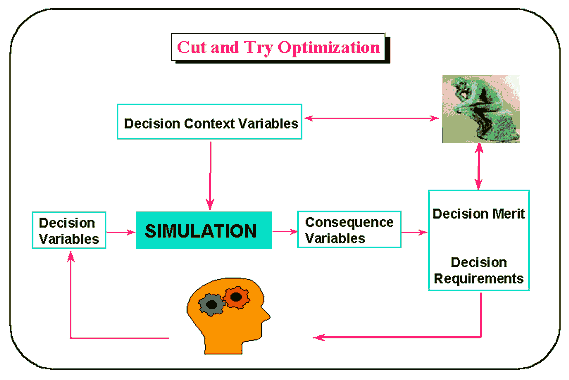

Think of a fluid dynamics simulation as a formula attached to some cells on a spreadsheet. Fill in cells to specify design conditions like altitude, speed of flight, angle of attack for the wing; then fill in a couple hundred cells with parameters that specify a particular wing shape, and after 2 hours of supercomputer time, the spreadsheet has calculated the airflow patterns around the hypothetical wing. It writes these in some cells connected to a formula to calculate the "drag" associated with the wing. That "drag" number is the figure of merit for the design. Less drag is better. Of course, there are extra constraints or requirements on the design. The aircraft should be able to fly a certain distance without refueling, etc.
The designer looks at these results, and either alters the problem specifications, or decides on some new design variables, or most likely does both.
Previous Next
Sites & Affiliations | Leadership | Research & Applications | Major Accomplishments | FAQ | Search | Knowledge & Technology Transfer | Calendar of Events | Education & Outreach | Media Resources | Technical Reports & Publications | Parallel Computing Research Quarterly Newsletter | News Archives | Contact Information
| Hipersoft | CRPC |
© 2003 Rice University
|